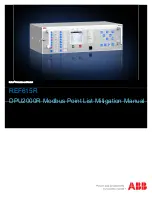
PCI Express Connectivity Products
KEY FEATURES
New generation of I/O interconnect
standard
Supports serial data transfer rates
to 115.2kbps
Supports parallel data transfer rates
up to 1.5MB/sec
Compliant with PCI Express Base
Specification 1.0a
Variety of configurations: serial,
parallel, serial and parallel
2, 4 or 6 port configurations
Advanced architecture making use
of point-to-point technologies
Data bus transfer rate of up to
2.5Gbps under one-lane operation
1.5 times faster compared to
existing 32 bit PCI bus
Broad product offering with multiple
serial/parallel I/O configurations
Advance PCI technology with the
introduction of the PCI Express Card. PCI
Express is the new standard serial
connectivity card in PCI technology and
the successor for server- and client-
system I/O interconnects.
In addition to the bus technology
upgrades, such as faster speeds and
deeper FIFO rates, PCI Express touts
many advantages over the traditional PCI
card including point-to-point link dedicated
to each device, instead of PCI shared
bus; lower latency in server architectures
due to a more direct connection to the
chip set; small connectors with easier
implementation for system designers and
advanced features via isochronous
channels for guaranteed bandwidth
delivery, advanced power management
and hot swap support.
PCI Express Technology
PCI Express cards are available in 2, 4 or
6 port serial card configurations and offer
high-speed, serial I/O bus that maintains
backward compatibility with PCI
applications and drivers. The layered
architecture supports existing PCI
applications and drivers by maintaining
compatibility with existing PCI model.
Defined by high performance, scalable,
serial bus, the PCI
Express card is
Model No.
Description
DSLP-PCIE-100
2 port serial RS-232 to DB-9, low profile, full height PCI Express board
QSLP-PCIE-100
4 port serial RS-232 to DB-9, low profile, full height PCI Express board
DP-PCIE-100
2 port parallel to DB-25, PCI Express board
DS-PCIE-100
2 port serial RS-232 to DB-9, PCI Express board
DSSP-PCIE-100
2 port serial RS-232 to DB-9, 1 port parallel DB-25, PCI Express board, requires 2 PC bracket slots
QS-PCIE-100
4 port serial RS-232 to DB-9, PCI Express board, requires 2 PC bracket slots
QSSP-PCIE-100
4 port serial RS-232 to DB-9, 1 port parallel DB-25, PCI Express board requires, 3 PC bracket slots
HS-PCIE-100
6 port serial RS-232 to DB-9, PCI Express board, requires 3 PC bracket slots
XCD-B/PCIE-ST
1 rear slot ExpressCard Drive, PCI Express interface
PX series - Serial, Parallel Product Lines
5675 Hudson Industrial Parkway Hudson, OH 44236
1.800.553.1170 www.quatech.com
dedicated to the device while
multiple PCI Express devices can be
active without interfering with each other.
Quatech also offers 2 port parallel cards;
2 and 4 port serial/parallel I/O cards and
PCI Express to ExpressCard converters.
Advanced features
As client system boards migrate from the
PCI connector to the PCI Express
connector, Quatech’s PCI Express cards
maximize advanced features such as:
Advanced power management
Support for real-time data traffic
Hot plug and hot swap
Data integrity and error handling
PCI Express vs. Universal PCI
Although PCI and UPCI Cards can be
used in a variety of platforms, PCI
Express reflects an industry trend to
replace legacy shared parallel buses with
high-speed serial buses. They both have
the same dimensions and are equipped
with rear brackets, the difference lies in
the I/O connectors. PCI Express has 36
pins versus the 120 pins on a standard
PCI connector.
Model Selection Guide





















